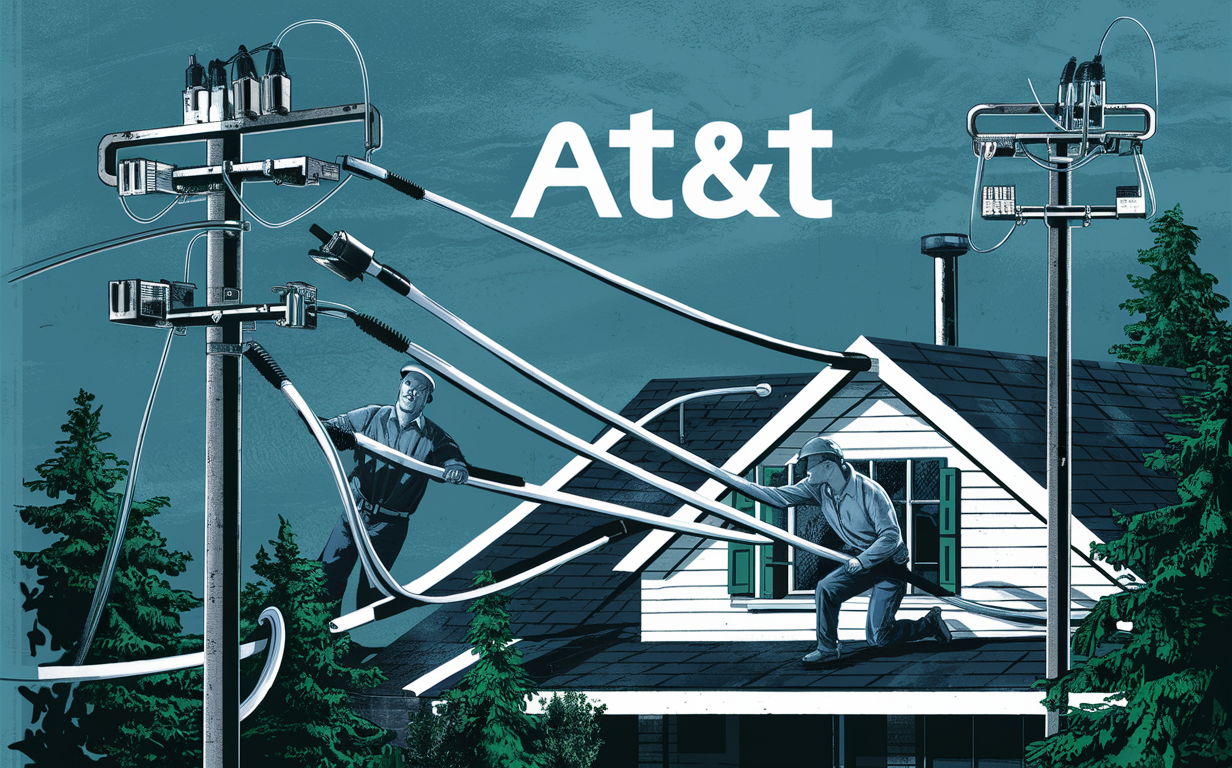How does AT&T connect internet to your house?

Through the use of the following technologies, ATT can connect homes to the Internet. The two major forms of connection include DSL and fiber optics.
DSL (Digital Subscribers Line) internet service is a broadband connection that utilizes the existing copper telephone wires to transmit data into people’s homes. A DSL filter is used to filter out the data signal from your telephone line service. This data is then converted to digital form and transmitted through the copper line to the network interface or ATT local exchange network operating center or central office.
Many DSL customers are connected to an AT&T Internet DSLAM, which can be in the local telephone company's central office or multiple sites in a given area. This links your home copper wiring to a high-speed backbone using multiplexers that balance the loads and give protection from troubles on pairs. To increase the signal strength, perhaps at the point where the phone line enters your compound, AT&T may opt to install a splitter.
The quality and speed of a DSL Internet connection depends on the distance between your home and the DSLAM equipment. The maximum speed for basic DSL is often up to 15 Mbps download and 1 Mbps upload while 12 Mbps is more prevalent in the market. However, if the user is more than a few miles away from the DSLAM he may only get up to 1.5 or 2 Mbps. Other parameters such as line noise and the thickness of the cables used on copper also play a role in influencing its efficiency. Consequently, DSL internet connection speeds are comparatively lower in geographically more remote areas located farther away from the central office.
Another disadvantage of DSL internet is that being a form of a shared connection, the speed of the connection is dependent on the number of people in your region who are also connected. Traffic causes delays, pauses, and other issues, mainly during the evening when kids are off from classes and adults return from work.
Fiber optic internet has an internet speed that is way faster and more reliable than the cable or DSL connection but it is still not very widespread, as AT&T is gradually expanding the fiber network. Currently, AT&T offers fiber broadband service in which the data signal is transformed to light and transmitted using flexible and thin glass fiber cables that are as clear as Threads.
AT&T’s fiber network is based on the Active Optical Network (AON) architecture. In this design, the service provider is responsible for the installment and/or management of cable and electronics up to the customer's location. AT&T embeds lasers and modulators in cabinets located throughout neighborhoods and links these to a dense fiber ring. From these distribution areas, individual fiber optic cables are trenched underground or strung aerially on utility poles to deliver service directly to eligible homes and businesses.
An AT&T technician, who has received professional training, will install an Optical Network Terminal (ONT) either indoors or outdoors, at your home. This small appliance translates fiber optical light signals into electrical signals that can be wired through an Ethernet cable or wireless through a Wi-Fi router in the house. ONT devices are also used for television, telephone, and smart home services from AT&T. For the internet, the majority of most of AT&T fiber customers receive a Wi-Fi gateway router combination for wireless connection.
The fiber has an enormous bandwidth capacity to support symmetrical gigabit speeds up to 1Gbps, which is 1000 Mbps. Modern fiber packages provide users with a download throughput of 300 Mbps and upload throughput of 300 Mbps – which is significantly higher than what cable and DSL services offer. This blazing performance backs the entire connected household and will not flinch while running applications that require a lot of bandwidth such as video calling, online gaming, 4K video streaming on multiple devices, and much more.
Fiber optic internet also offers highly superior reliability of connection because the cables carrying the light signals are made of flexible glass and do not get affected by electromagnetic disturbances or weather vagaries as the satellite or copper wire connections sometimes experience. Although the demand for faster speeds is increasing exponentially year after year, fiber has been tested for its future-shock readiness.
The availability of AT&T Fiber means that more neighborhoods can now get access to symmetrical internet speeds that go up to 1Gbps. There is also bundled discount that comes with the fiber internet service when you subscribe with a wireless plan, TV service as well as smart home services from AT&T. To many of the customers, bundling of multiple services on one bill through AT&T is more convenient and they get to enjoy the maximum discount.
In conclusion
AT&T provides Internet services through digital subscriber lines over the copper telephone wire and new fiber optic lines. For instance, with fiber networks currently being laid down, customers are connected to service that is exponentially faster and more reliable. However, factors such as geographic location and technical issues inherent in old cables still slow down speeds for some residences. You should call AT&T to confirm the availability of internet at your physical address and to compare home internet packages.
Upgrade to faster, more reliable AT&T Fiber Internet today! Call us at +1 844-905-5002 and get connected with speeds that keep you ahead.